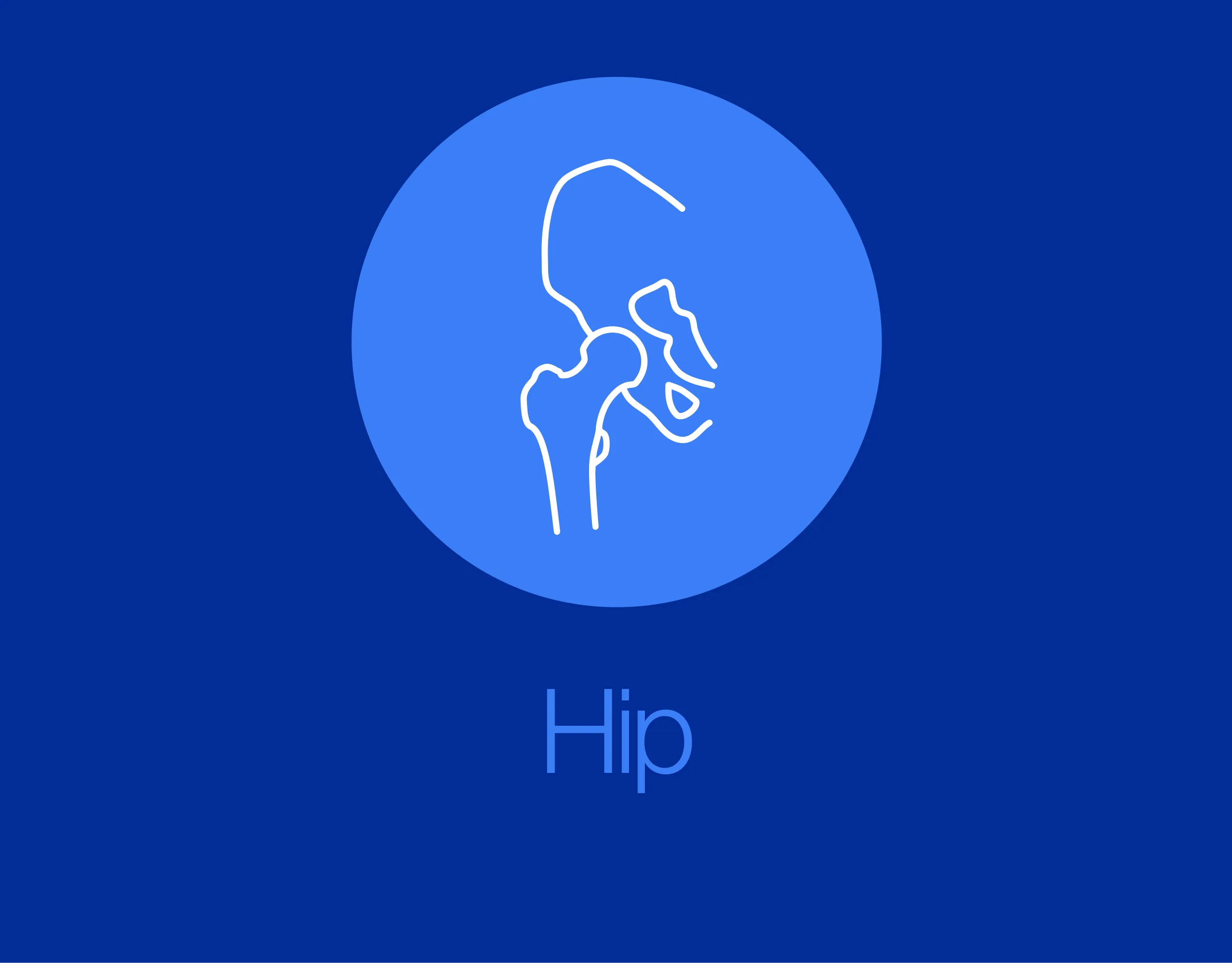Approach to the posterolateral surface of the tibial shaft
1. Indications
The posterolateral approach is ideal for use in the midshaft and distal tibia. It is used for open plate fixation of the tibia on its posterior surface. This may be necessary when the anterior soft tissues are compromised.
The posterior surface of the tibia is relatively flat and therefore little contouring of the plate is necessary.
This approach is often also utilized for treatment of nonunions with posterolateral bone grafting. It allows access to both the tibia and fibula.
It is a more challenging approach requiring a thorough understanding of the surgical anatomy.
This approach is rarely used in the proximal tibia.
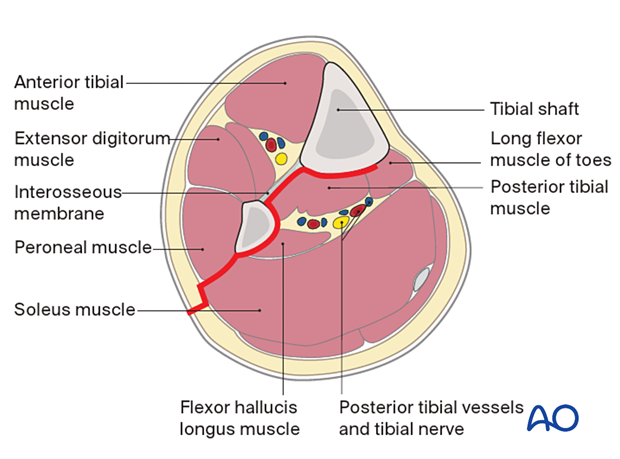
2. Positioning
The patient may be positioned either laterally or prone. Since the fibula lies more posteriorly than the tibia, a prone position greatly facilitates exposure, and is preferred.
A tourniquet helps to minimize venous bleeding, which may become significant. Place it high on the thigh, after the patient is positioned. Inflation is optional.
3. Anatomy
The lateral and posterior surfaces of the tibia are covered by muscle. The anteromedial surface has only a thin layer of subcutaneous tissue and skin. This surface provides less blood supply to the underlying bone.
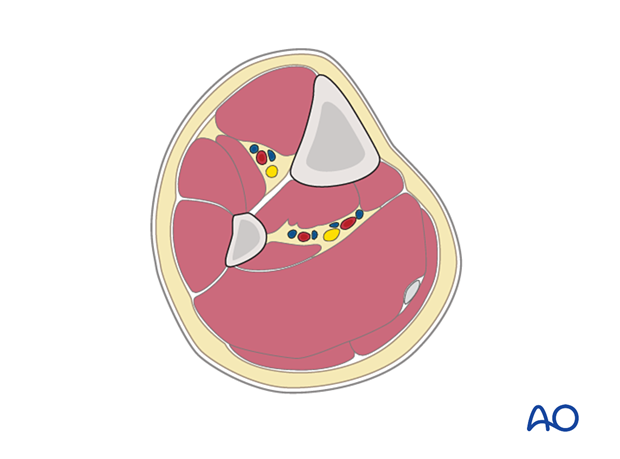
The lower leg has four compartments:
- Anterior
- Lateral
- Deep posterior
- Superficial posterior
The anterior compartment has three muscles, one main artery, and one nerve: the tibialis anterior, extensor hallucis longus, extensor digitorum longus, the anterior tibial artery, and the deep peroneal nerve.
The lateral compartment has two muscles and one nerve: the peroneus longus and brevis, and the superficial peroneal nerve.
The deep posterior compartment has three muscles, two arteries, and one nerve: the tibialis posterior, flexor hallucis longus and flexor digitorum longus, and the peroneal and posterior tibial arteries, as well as the tibial nerve.
The superficial posterior compartment has two muscles and one nerve: the gastrocnemius, the soleus, and the sural nerve.
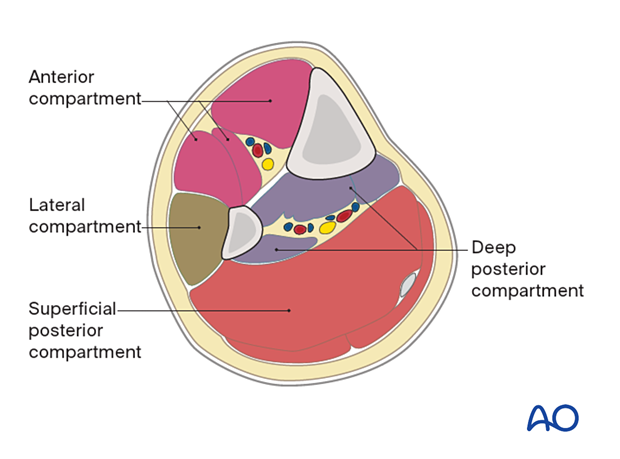
4. Skin incision
The length of the incision varies, but it should begin over the lateral border of the gastrocnemius muscle and extend distally to a point that is midway between the Achilles tendon and the fibula.
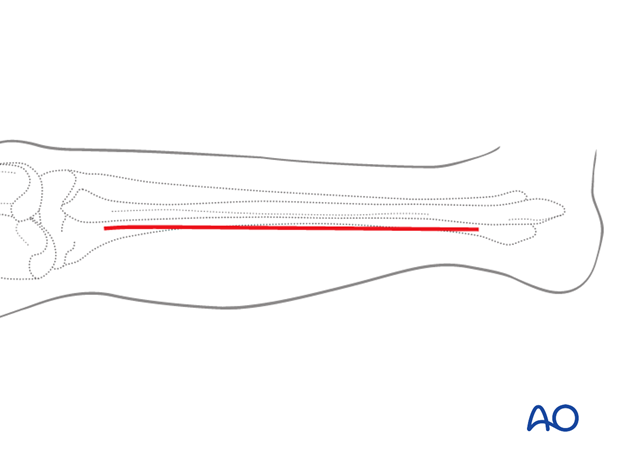
The interval between the lateral and posterior compartments is usually easier to find distally. Proximal dissection then follows.
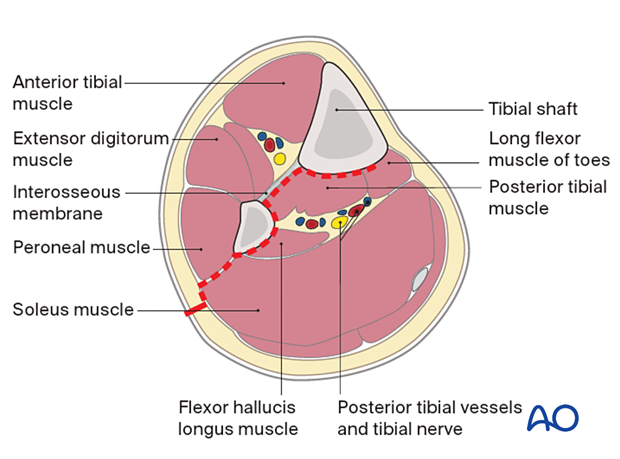
5. Dissection
The plane of the dissection is between the superficial posterior and lateral compartments. The fascia is incised, and the gastrocnemius and soleus are mobilized medially leaving the peroneal muscles laterally. In this way, the posterolateral aspect of the fibula is exposed.
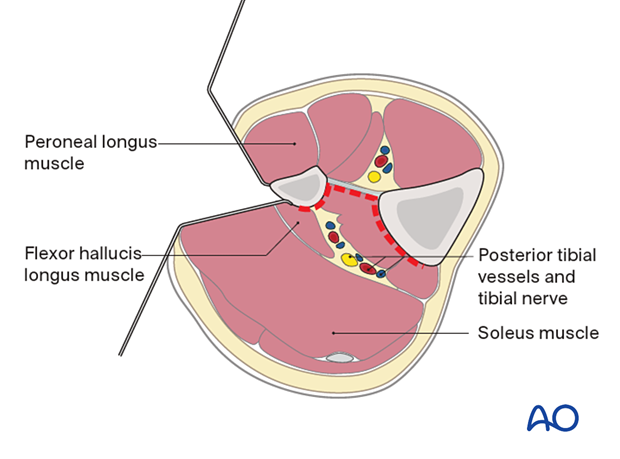
Often there are crossing perforating branches of the peroneal vessels, which must be ligated.
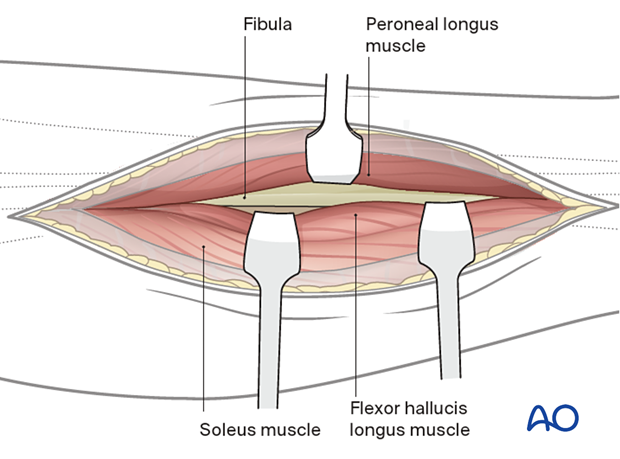
The Flexor hallucis longus (FHL) arises from the posterior aspect of the fibula. This is mobilized posteromedially. Medial dissection is continued until the interosseus membrane is encountered.
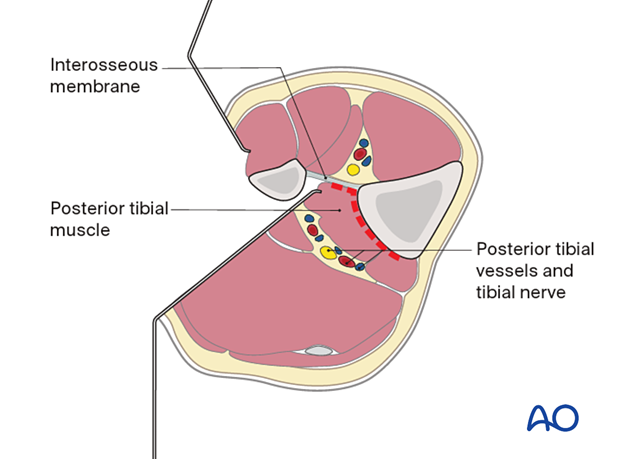
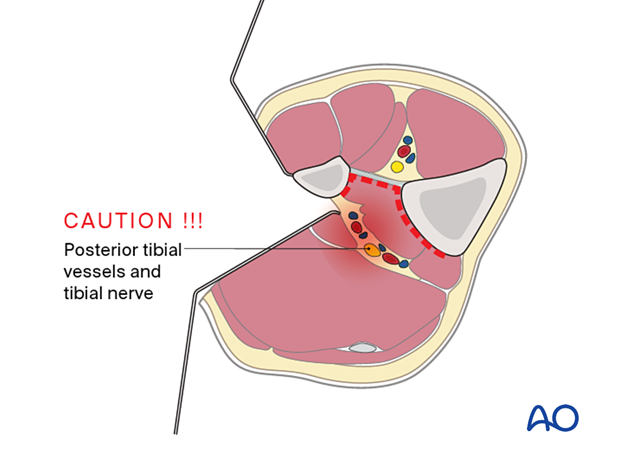
With the interosseous membrane identified, mobilize the remainder of the deep posterior compartment medially until the posterior aspect of the tibia is encountered. Extend the exposure proximally beyond the fracture as far as necessary for plate fixation.
Be aware of the common peroneal nerve crossing the fibular neck very proximally.
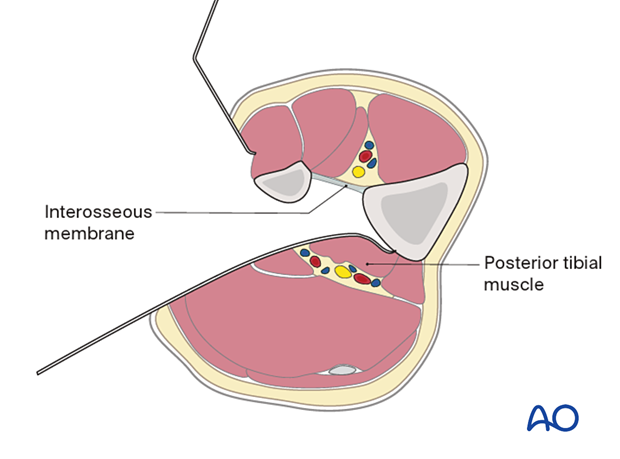
At the conclusion of the dissection the surgeon should have access to the posterior aspects of both the tibia and the fibula shafts.
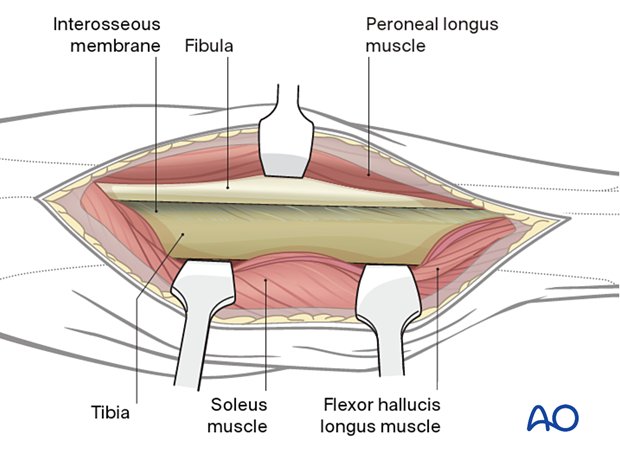
6. Wound closure
A drain can be placed in the deep zone of the dissection to prevent postoperative hematoma formation. While the fascia may be closed between the superficial posterior and lateral compartments, swelling and compartment syndrome are definite risks.
If there is any concern about a developing compartment syndrome, the fascia should be left open and only the skin and subcutaneous layers closed, if deemed to be safe. If compartment syndrome is anticipated to develop postoperatively, skin and subcutaneous tissue should not be closed. Temporary wound coverage techniques need to be employed until swelling resolves and definitive wound closure can occur safely.
